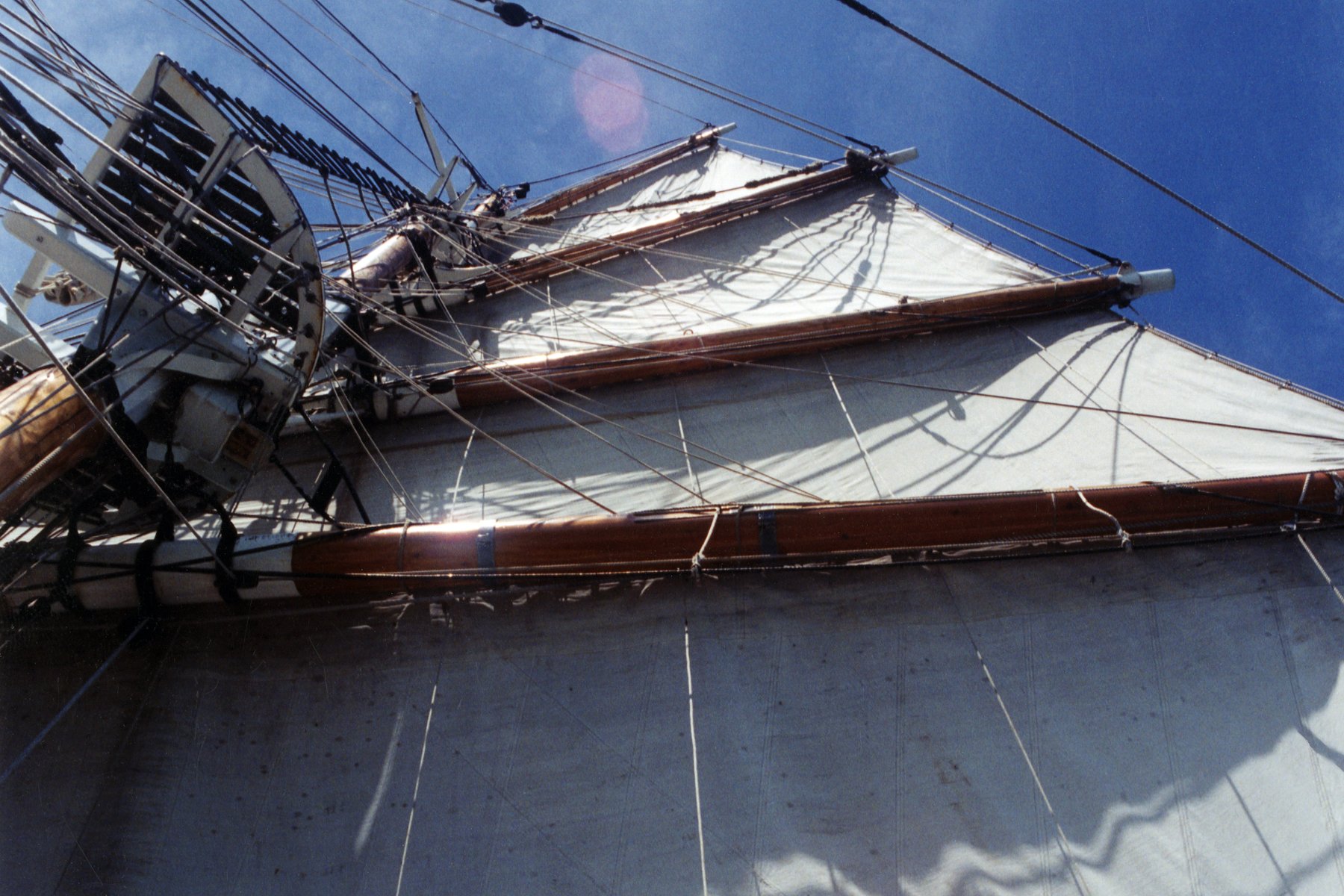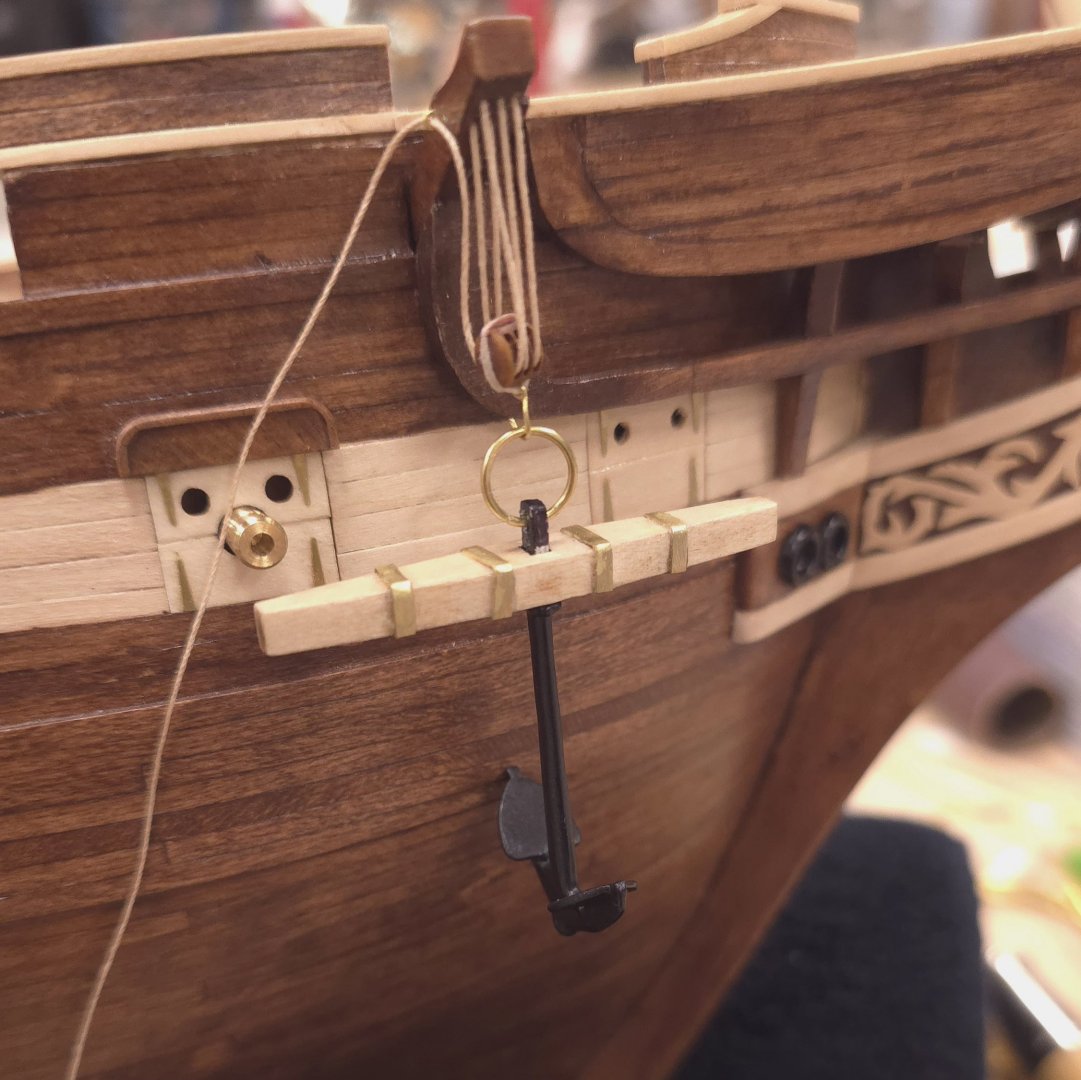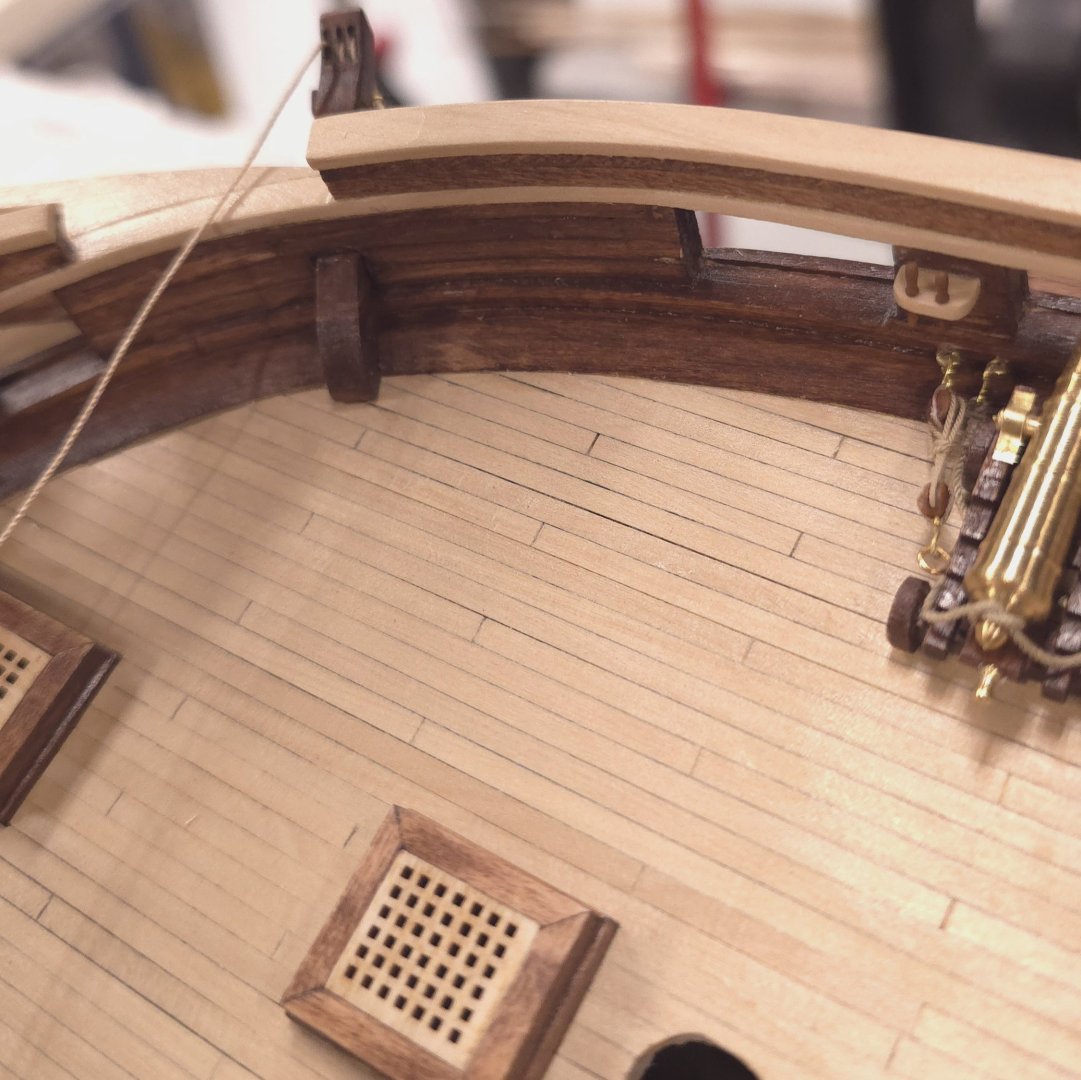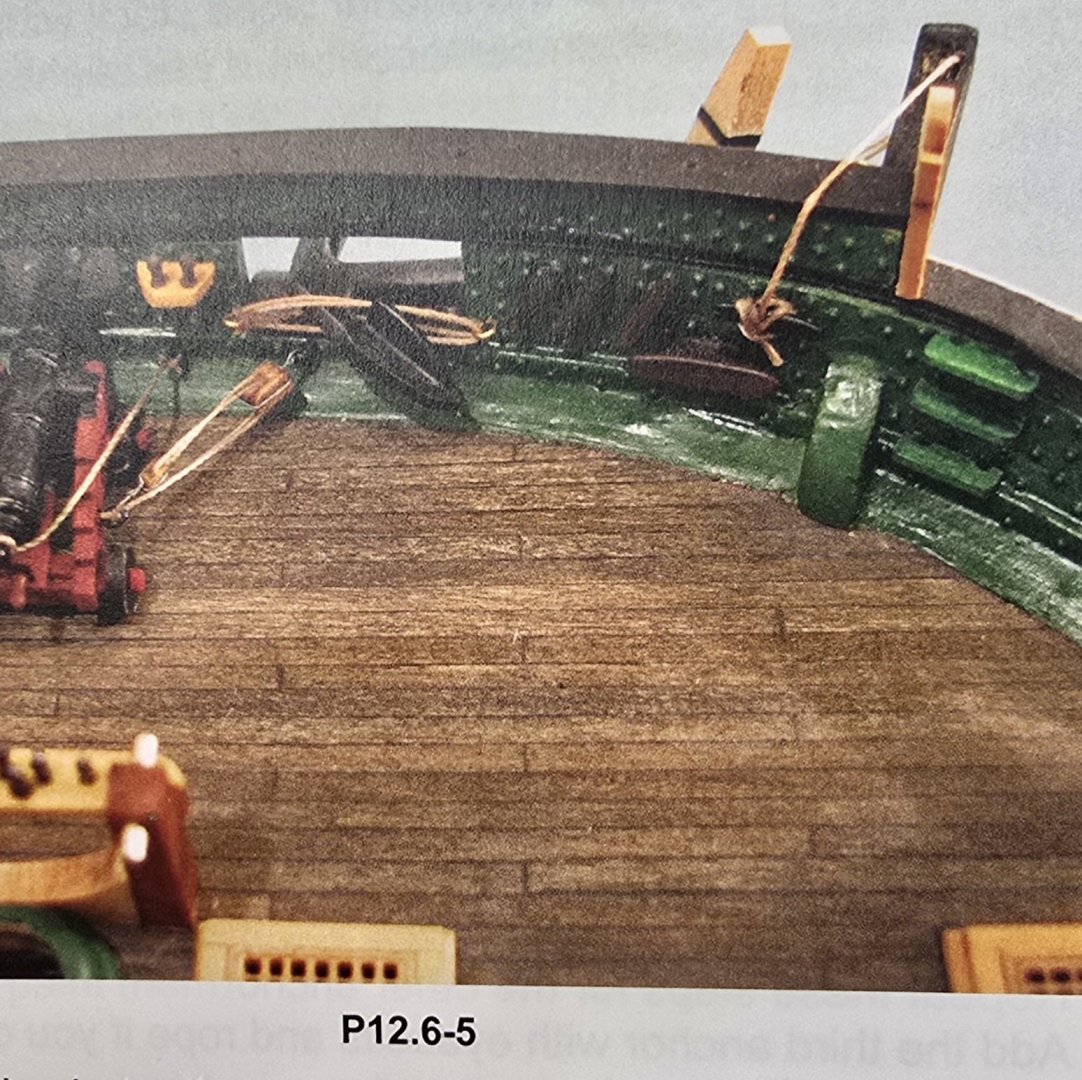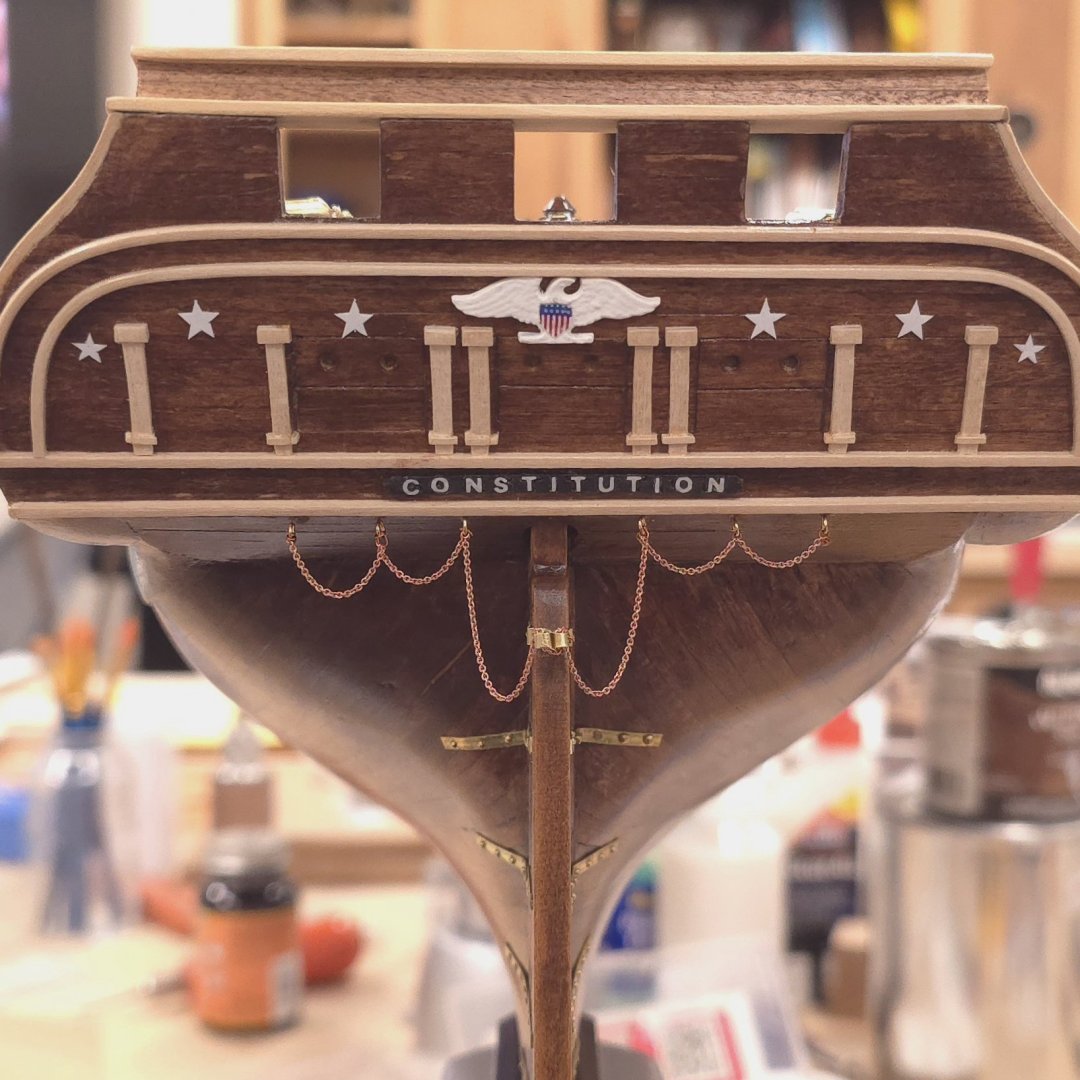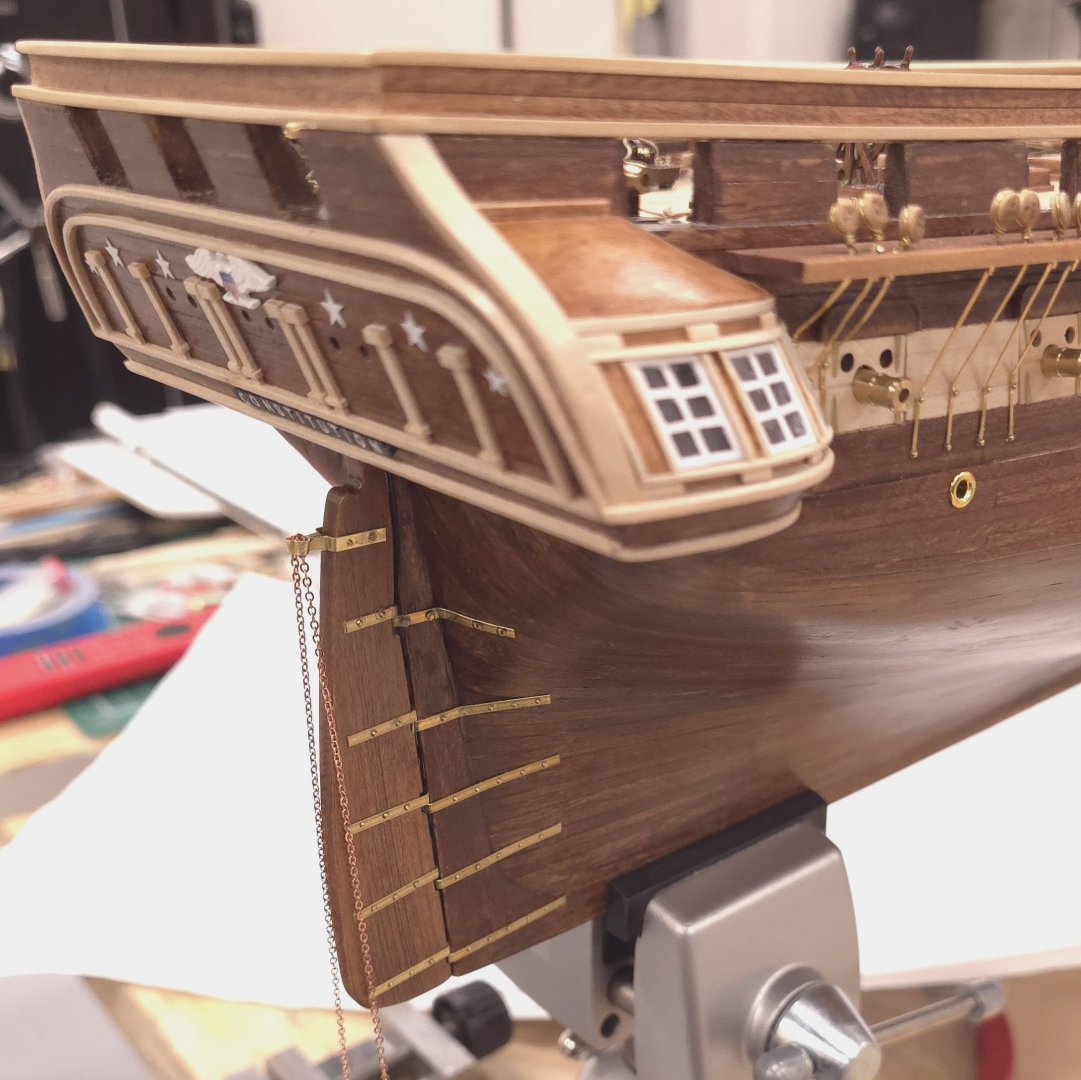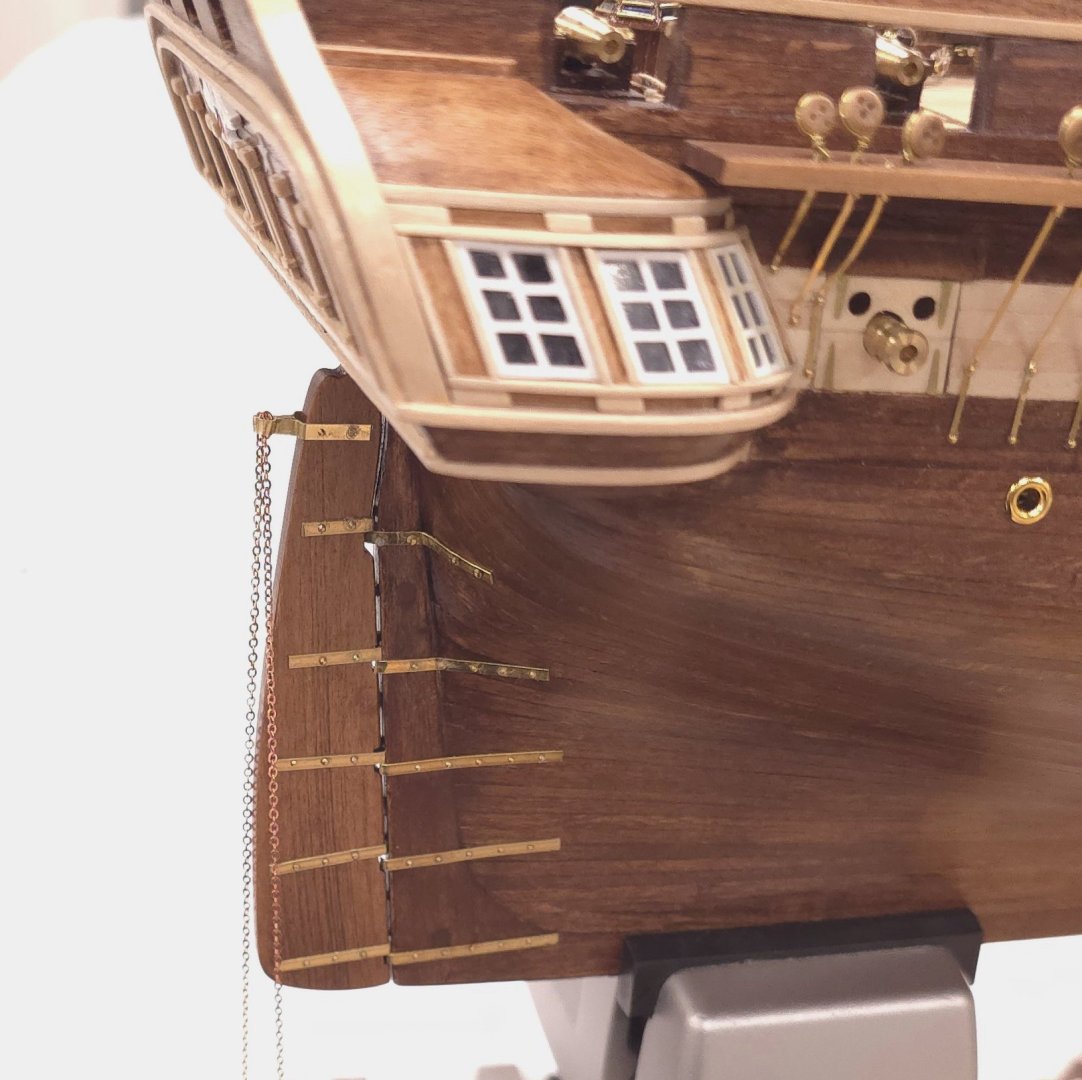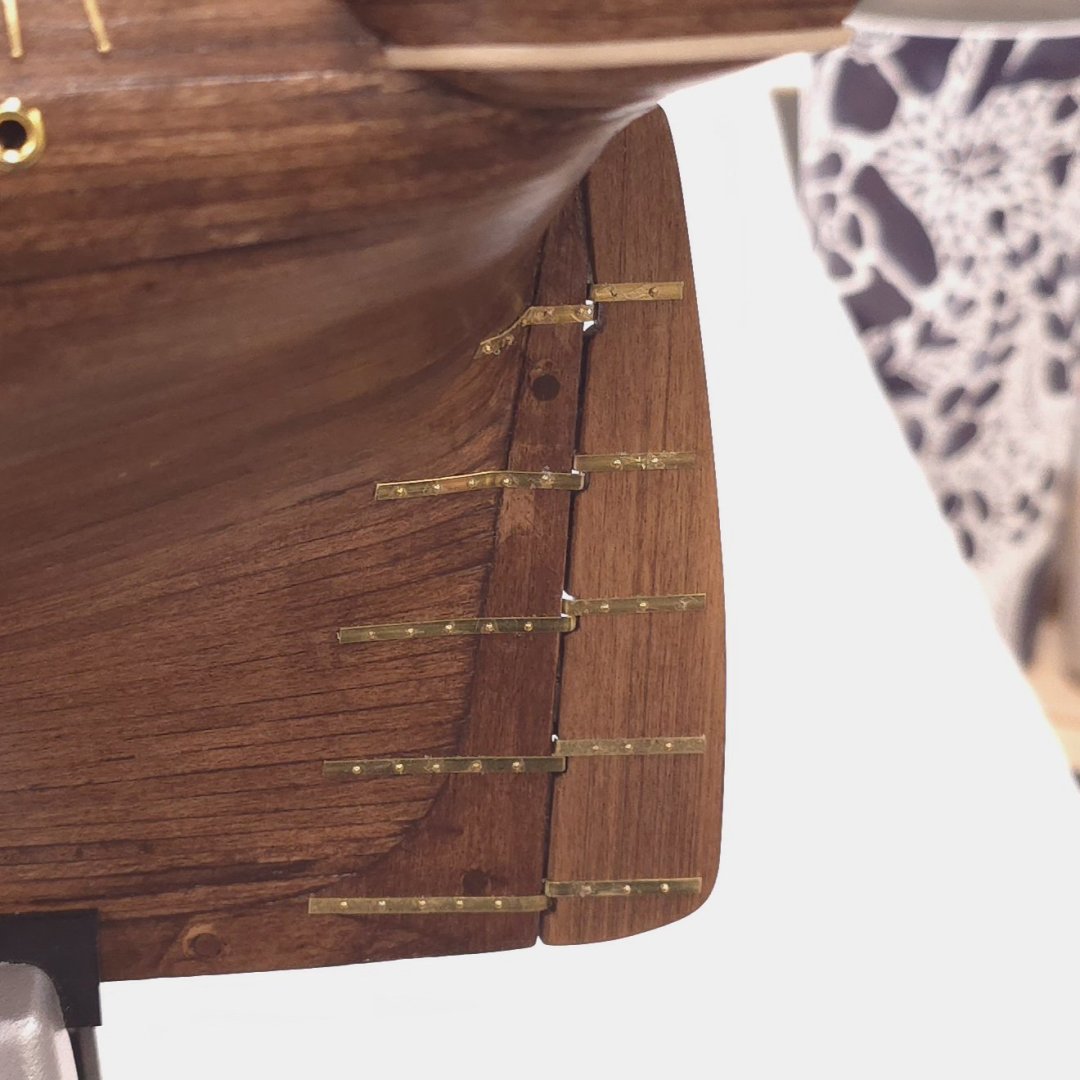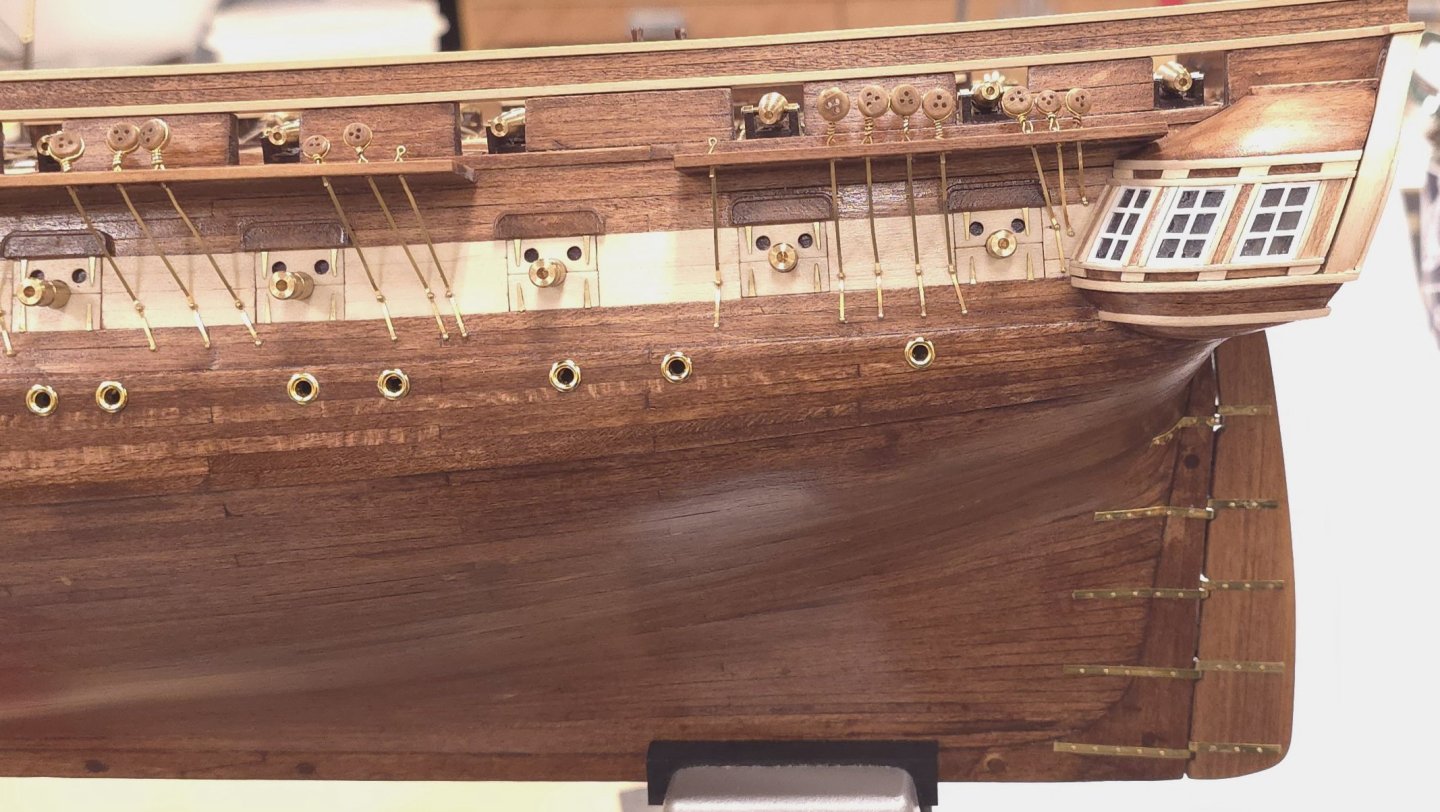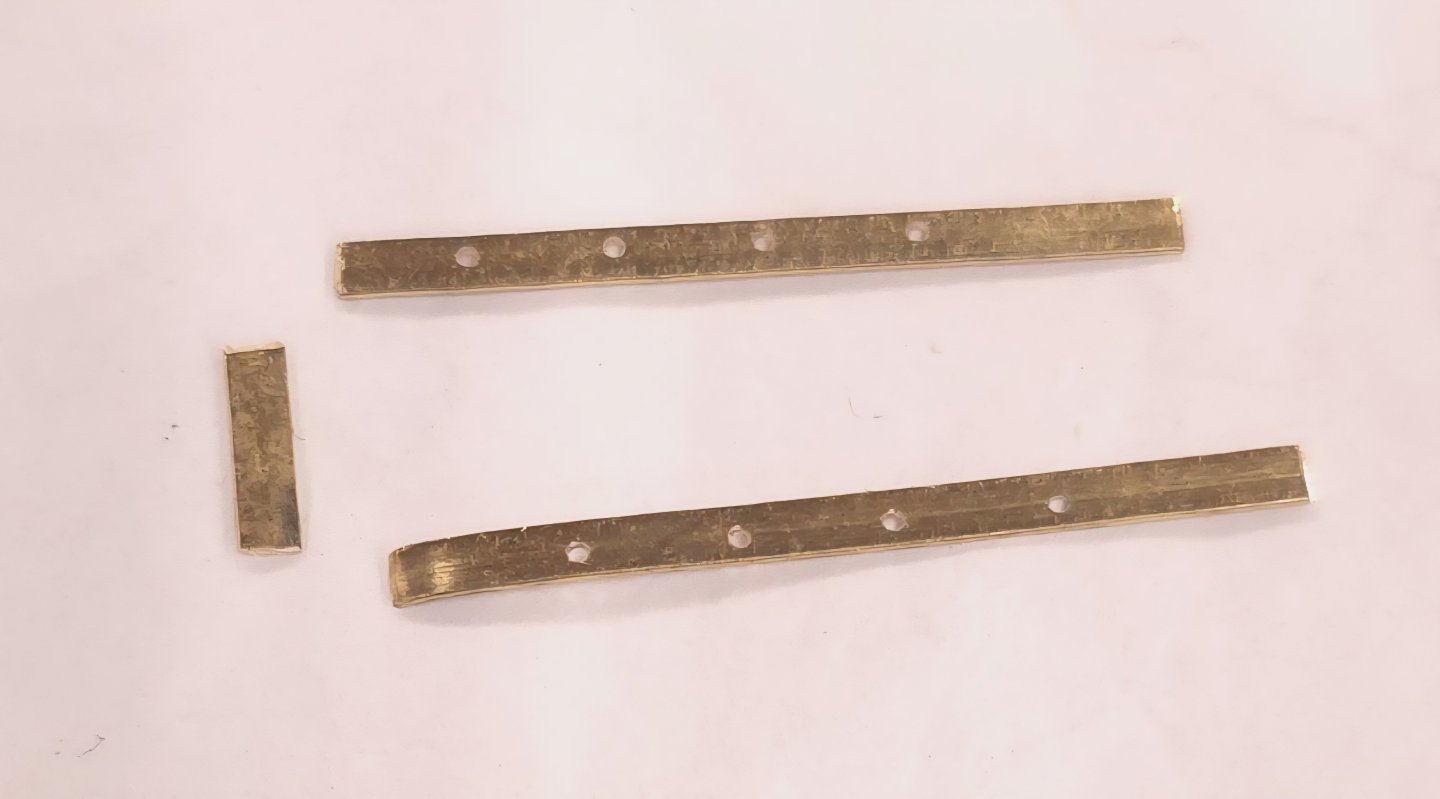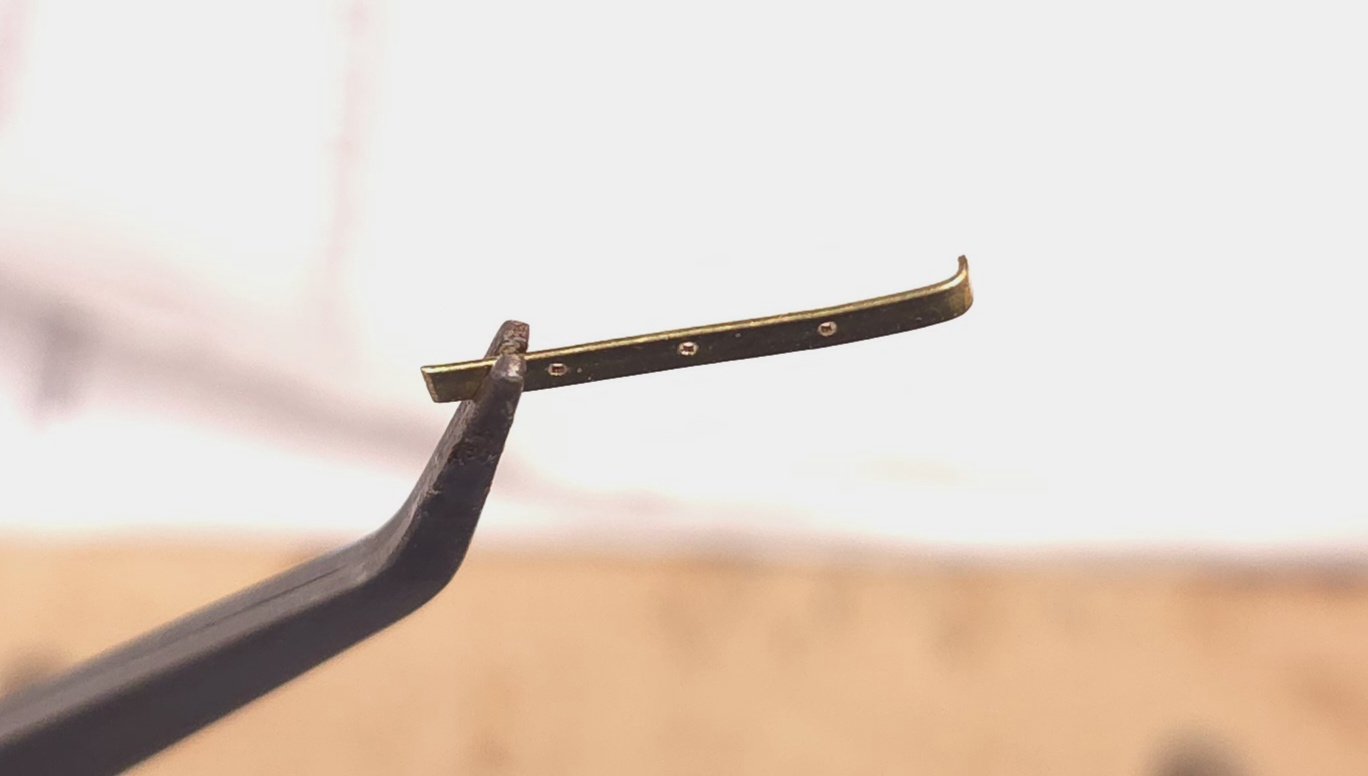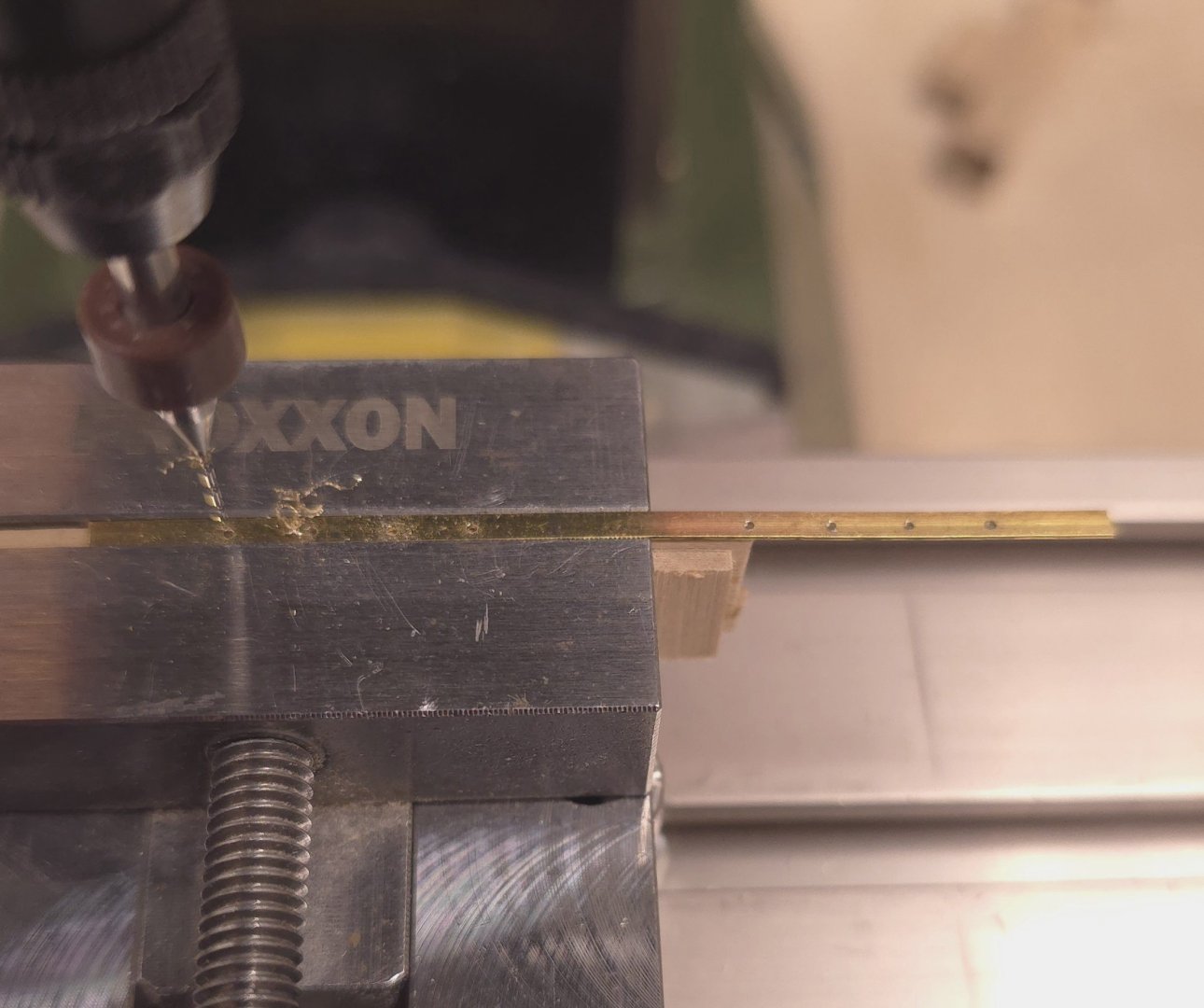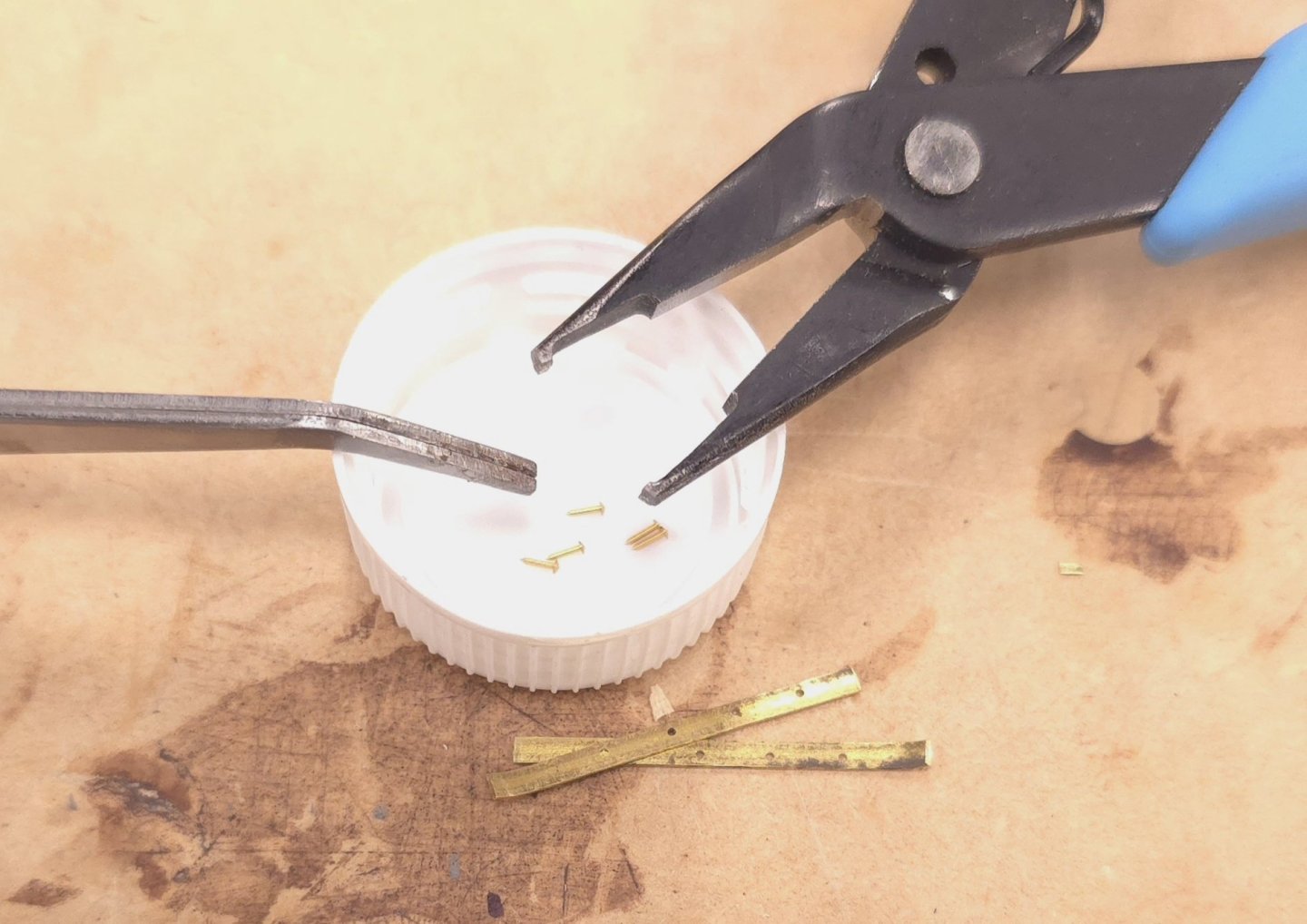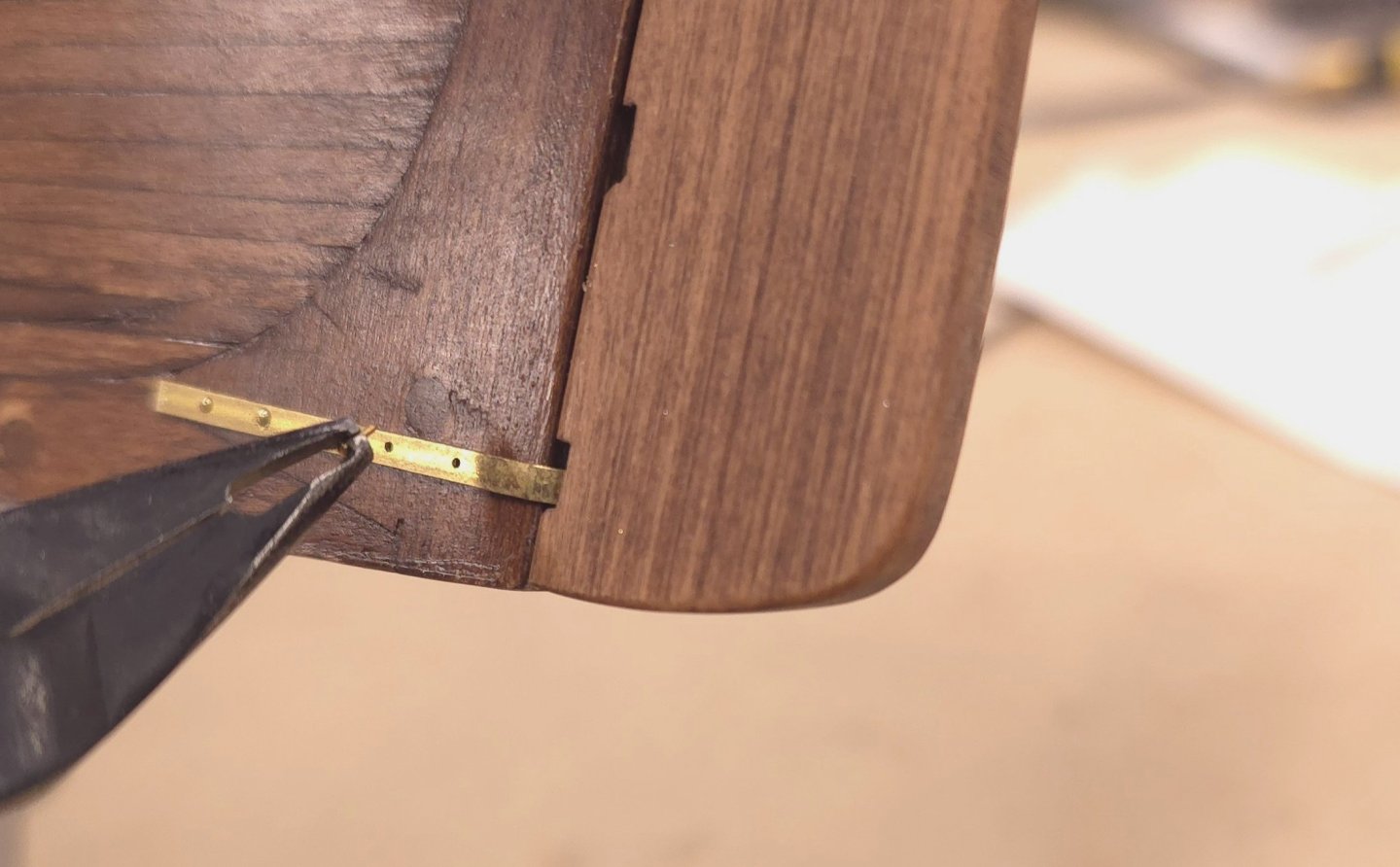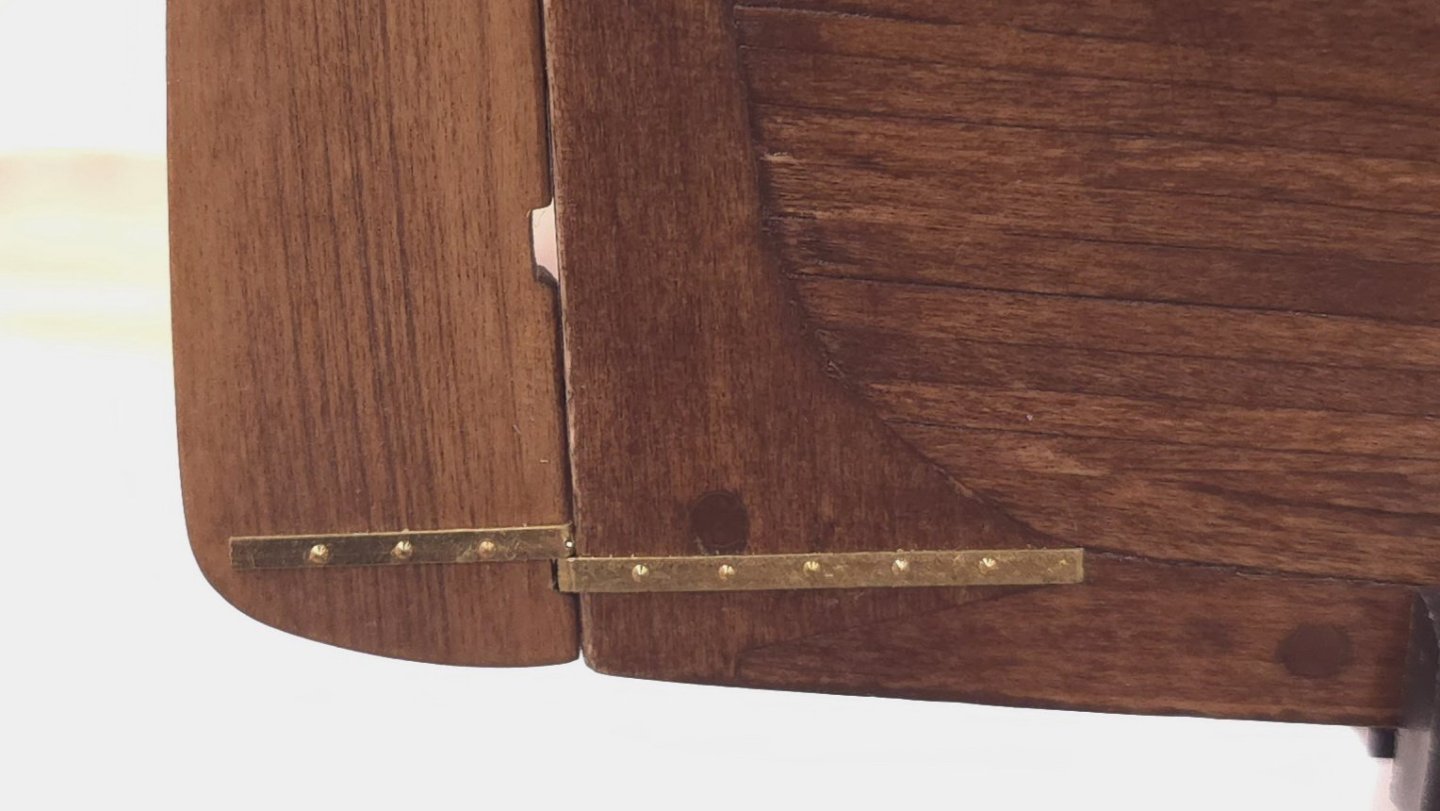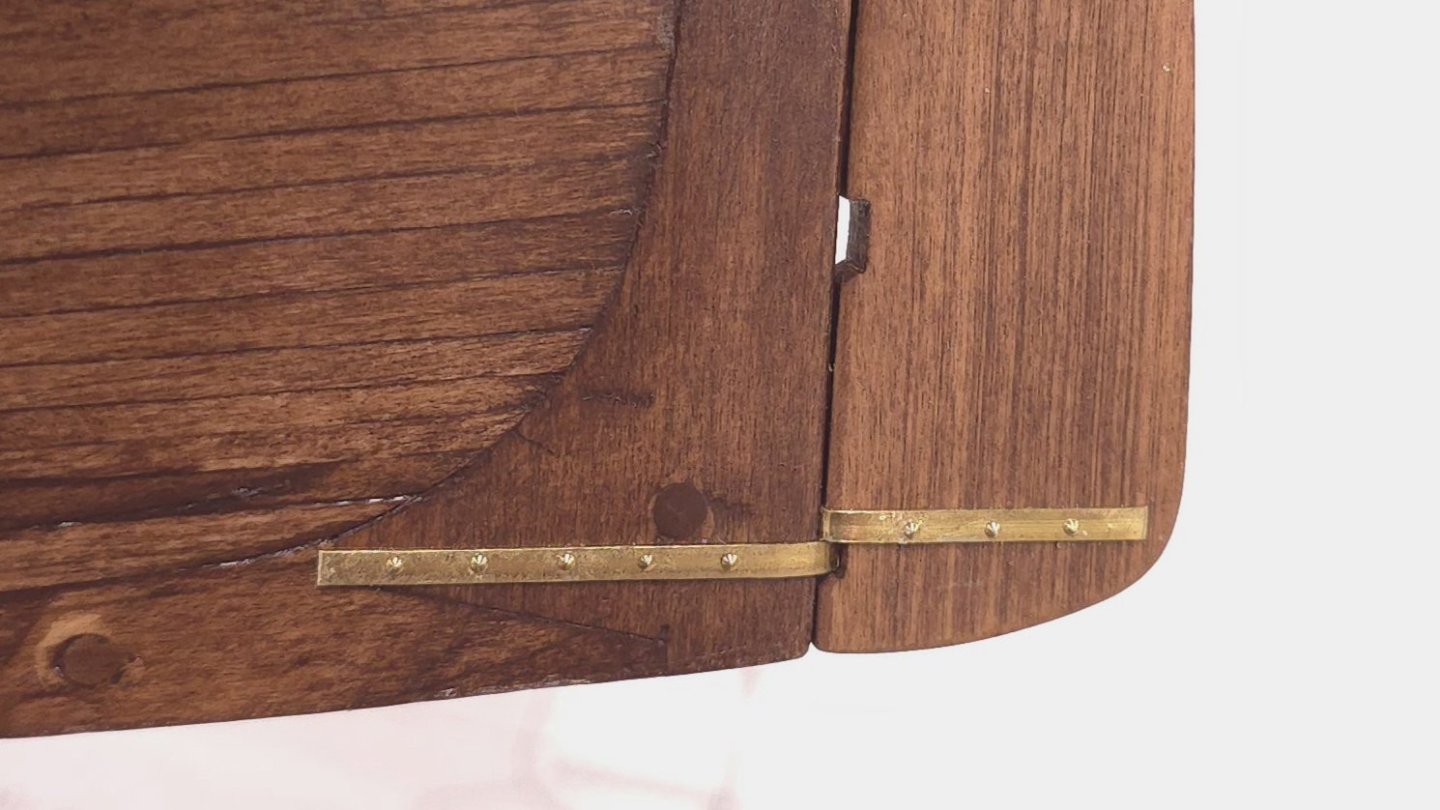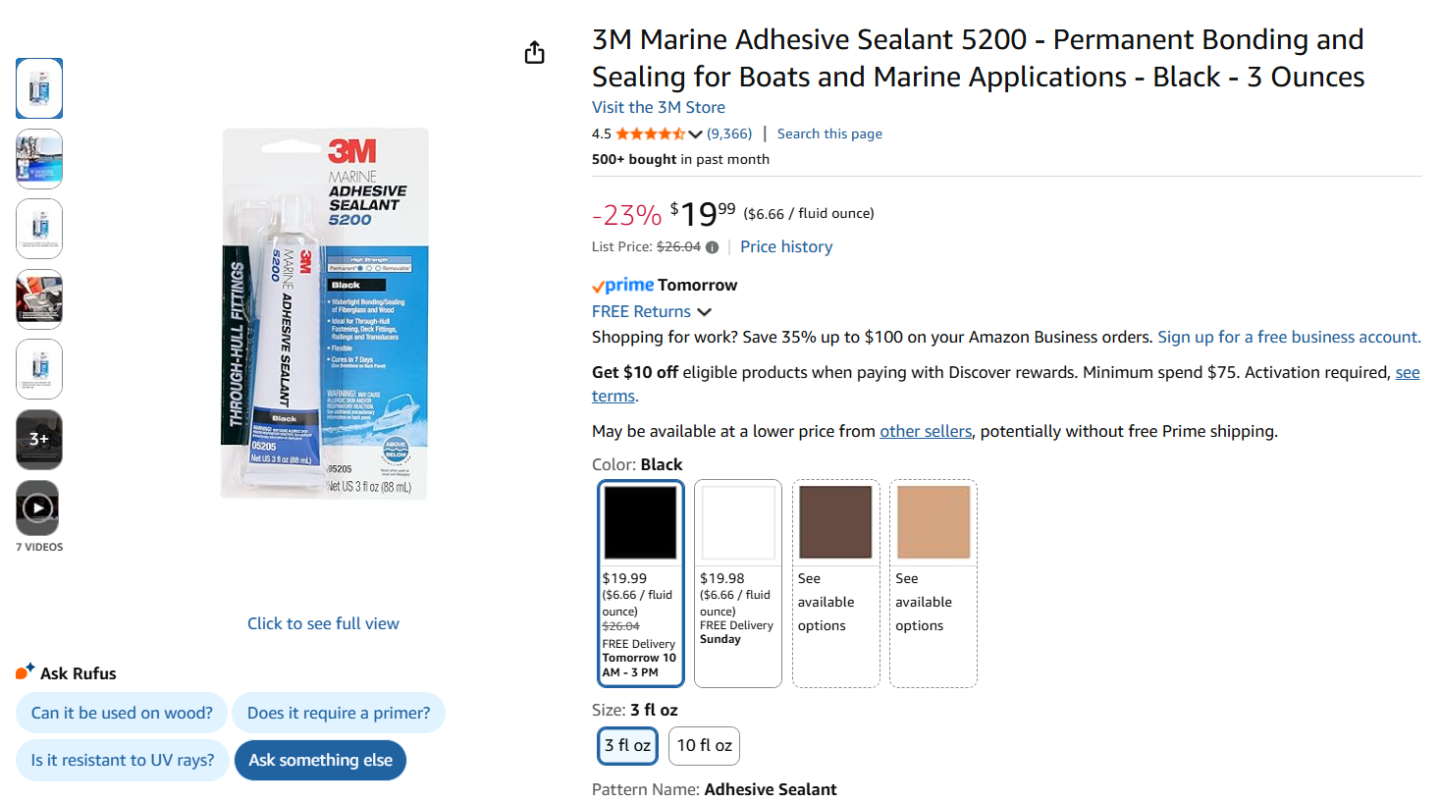-
Posts
1,028 -
Joined
-
Last visited
Content Type
Profiles
Forums
Gallery
Events
Everything posted by Der Alte Rentner
-
The old gray cells, they ain't what they used to be. It wasn't until I was looking for the cleat to tie the anchor rope to, that I realized I didn't have any. Somehow, I only installed cleats at the stern half of the model. So, yet another delay in finishing up the hull. I did sort of enjoy stropping hooks to two triple blocks, nothing like a stroll down memory lane.. But, I'm calling it quits for now, going home to bake Christmas cookies. (In part, because I also learned that I forgot to stain the bulk of the cleats. I remedied that just now. Since it will take a while for those to dry as well, I'm off to do help the Admiralty with holiday preparations.)
-
Hi Jon, Shifting my attention to the anchors, and having overlooked your methodology on the installation of rudder chains, I perused your build log first in my research on rigging ideas for the anchors. I seem to remember in another conversation, that you plan to employ three methods of displaying them. Will one of them be XKen’s approach for the bow anchors - lashing them to two brackets just forward of the channels? There seem to be as many options as builders on this. I’m not keen to strop hooks onto Syren triple blocks, so there is some appeal in omitting these altogether. just curious..
-

USS Constitution by mtbediz - 1:76
Der Alte Rentner replied to mtbediz's topic in - Build logs for subjects built 1751 - 1800
Agreed! -
It's academic now, Jon. I just finished rigging the anchor chains. I did revisit your posts 757 through 760, and saw that you tried to stick with the plan. I didn't see me trying to squeeze 5 eyebolts into the inch and a half or so on either side of the rudder. Also, I did like the look of the copper chain after all. I chose to cut the chain into shorter segments with open links at either end and used copper wire to reconnect the segment after passing the wire through the eyebolt. Not too dissimilar to your attaching the chain with thread. It beat the Hunt method which relied on glue to hold the chain into place on the eyebolts. It's amazing how many different ways there are to skin this cat. Tom, I would still appreciate seeing how you skinned yours. Thanks all.
-
After you’ve completed your state of the Constitution assessment, might I prevail upon you to provide some photos of your rudder and rudder chain assembly? I can’t find a single photo of the aft end of Conny - at least not since you constructed the galleries. (By the way, once again, kudos on your truly excellent workmanship on those). I think I have my general approach thanks to Usedtosail’s build log, but I’m curious how you tackled this. Especially details around the outboard ends of the chains. Did you bury them in holes in the hull? Or just end them at the outboard eyebolts? Thanks
-
I had to search high and low for a method to deal with the rudder chains, so, once again fired up the way-back machine and found this post from over a decade ago. I had the same issue as you, but hadn’t thought of cutting that skinny chain until I read the above. Fiddly doesn’t begin to describe this process, (I know from attempting to thread copper into the end loops), but I have my direction now. Thanks for posting this little detail. and kudos for providing the index at the beginning of your build log. Merry Christmas.
- 1,354 replies
-
- constitution
- model shipways
-
(and 1 more)
Tagged with:
-
I know this comment come waaaaaay late, but I think yours is the best example of canopy frames I've seen anywhere at MSW. I love that you managed all of this without solder. Magnificent! I may yet reconsider introducing these to my spar deck, (maybe the icing on the cake after spars and rigging are done.) the small font is my way of weaseling out if I don't.. 😁
-
Maybe I'll yet find it sitting behind Conny on the workbench ala Jon. I will renew my search on Monday, when I return to the shipyard after being sidelined - yet again, this time by the flu. (shoulda got that shot in November..) This is something I thought I could easily find on Amazon, if I decide I want to pursue it, but nooo! I'll have to order the exact replacement from Model Expo. and that's only in copper. Boy, would I love to get this in gold! I do like shiny things..
-
Slow going on finishing up the rudder. When I started working on the starboard side, I realized that the rudder was narrower than the stern post on that side. So, I had to chisel away enough material to render the rudder flush with the stern post. That meant applying a new coat of stain, which took a day to cure. Then more poly needed to be applied. I also lost one of the gungeons. I spent a half hour sweeping everything within 10 ft of my chair in the workshop, and cleaned everything off the work table, but couldn't find it. I'm sure it will turn up - someday.. 😁 Then I fashioned the chain iron out of another strip of brass. I'm debating on whether or not to invest in a Dremel to make the part the chain fits through narrower. But perhaps not. As Gregg said, no one is going to be peeking through the glass on the display case with a magnifying glass.. On page 63 in chapter 12 of the practicum, Hunt says that the kit comes with three different sizes of chain. "You will use the smallest size", he says. The parts list that came with the Constitution does indeed indicate that the kit comes with three different size chains, but I can only find two. Interestingly, the chain pictured on page 64 of the practicum looks to be the middle sized one, which is the smaller of the two I have. Since I have eye bolts of different sizes, I could use this and be done with the rudder. To those of you who have done this, did you in fact have the 42 link per inch chain, part number WP0516 in the kit? And, did you paint it black, as Hunt instructs, but doesn't demonstrate? Once again, in the photos I see that some cleanup will be required.
-

USS Constitution by mtbediz - 1:76
Der Alte Rentner replied to mtbediz's topic in - Build logs for subjects built 1751 - 1800
Will do! -
Right you are Jon. I never had any intention of having the rudder move. And you're right, once it's in the display case it's not moving, even if it could. So, when you say you're planning on having yours move, do you mean that you're going to rig things so that you can turn the wheel and the rudder will move? Port side done..
-

USS Constitution by mtbediz - 1:76
Der Alte Rentner replied to mtbediz's topic in - Build logs for subjects built 1751 - 1800
I used to follow you, but haven't seen anything posted in ages. I took a quick look just now, I couldn't find a build log for Winchelsia, but I'm using the phone. I'll look again when I'm in front of mother ship desktop. Welcome back.. -
Okay, no glue. Well, except for a tiny droplet at the pointy end of the nails I use to secure the gudgeons and pintels to the hull and rudder. I tried bending some brass at 90°, so I could make a U-shaped piece, but this brass was so brittle that it broke. In the end I decided it didn't matter. Because any pins wouldn't be seen anyway. So I'm taking a bit of a shortcut. Anyway here's the process.
-
I think I'm going to skip the chain, and the third anchor. I just don't care for the look of the dangling anchor. Initially, I had hoped the Constructo kit had brass (vs Model Shipway's copper) chain, but their plans show rope - not chain, but now, I think I've convinced myself to pass on the chain all together. Thanks for your input Jon.
-
I checked this out at Amazon (see print screen below). This does not appear to be available in a clear. Black, White, Brown and Tan are the only options. I may resort to giving this a try, if my experiment with drilling holes in the gudgeons and pintles and attaching these with nails fails. There is also the option to skip the installation of these entirely. 😁 Thanks for the suggestion, Gregg
About us
Modelshipworld - Advancing Ship Modeling through Research
SSL Secured
Your security is important for us so this Website is SSL-Secured
NRG Mailing Address
Nautical Research Guild
237 South Lincoln Street
Westmont IL, 60559-1917
Model Ship World ® and the MSW logo are Registered Trademarks, and belong to the Nautical Research Guild (United States Patent and Trademark Office: No. 6,929,264 & No. 6,929,274, registered Dec. 20, 2022)
Helpful Links
About the NRG
If you enjoy building ship models that are historically accurate as well as beautiful, then The Nautical Research Guild (NRG) is just right for you.
The Guild is a non-profit educational organization whose mission is to “Advance Ship Modeling Through Research”. We provide support to our members in their efforts to raise the quality of their model ships.
The Nautical Research Guild has published our world-renowned quarterly magazine, The Nautical Research Journal, since 1955. The pages of the Journal are full of articles by accomplished ship modelers who show you how they create those exquisite details on their models, and by maritime historians who show you the correct details to build. The Journal is available in both print and digital editions. Go to the NRG web site (www.thenrg.org) to download a complimentary digital copy of the Journal. The NRG also publishes plan sets, books and compilations of back issues of the Journal and the former Ships in Scale and Model Ship Builder magazines.

